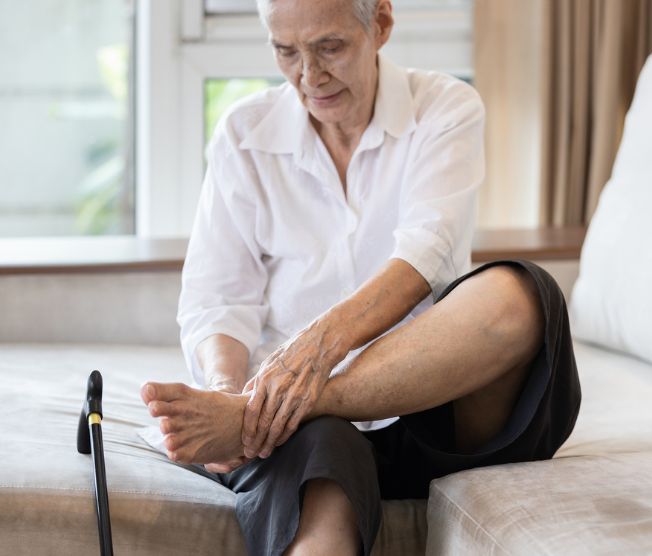 One-third of all Americans live with bunions. While not always considered a serious condition, bunions can become a physical burden for older adults and may be a sign the body is developing an inflammatory condition. For your own or a loved one’s health, here’s what you should keep in mind.
One-third of all Americans live with bunions. While not always considered a serious condition, bunions can become a physical burden for older adults and may be a sign the body is developing an inflammatory condition. For your own or a loved one’s health, here’s what you should keep in mind.
What Are Bunions?
A bunion is a bump-like formation that appears on the outside of the big toe, often due to years of pressure on the area. This relationship causes the metatarsophalangeal or big toe joint to misalign, resulting in a hard lump. Bunions may form on one or both feet.
All people are susceptible to bunions, although older adults have higher risks. No matter your age, bunions are more likely to form if:
- The way you walk places greater pressure on one side of your foot
- Your foot structure causes more pressure or weight to be placed on one side
- Your big toe leans into the next toe
- You work on your feet for hours at a time
- You wear poorly fitting shoes, including narrow styles that rubs against the side of your foot
Particularly for older adults, you’re more likely to develop bunions if:
- Other members in your family had them
- You have flat feet or another mechanical or gait problem
- You have rheumatoid arthritis or another inflammatory condition
For those with arthritis, inflammation gradually wears away toe joint cartilage while placing additional stress on the outside of the foot. These two factors can contribute to bunions, especially if arthritis affects how you walk.
Signs of Bunions
Bunions can have a hard, red, shiny, swollen appearance. You’ll also:
- Experience pain, numbness or a burning sensation as you try to bend your big toe
- Find you cannot flex the big toe at all
- Notice the bump feels warm and tender
- Find that standard shoes no longer fit your feet
- Live with calluses, corns or a hammertoe near the bunion
- Feel as if you can’t walk or move well, which reduces mobility
Delaying bunion treatment can eventually lead to osteoarthritis, bursitis or bone spurs.
Treating and Managing Bunions
For older adults, bunions are treated as both a health and lifestyle concern. You may be asked to lose weight, increase your activity level and be screened for certain chronic diseases. Imaging may be used to better examine the bone and diagnosis bunion. Immediate treatment is often a cortisone injection to reduce inflammation and pain.
Along with these factors:
- You’ll likely need to adjust your footwear to wider styles without heels or pointed toes. Weight gain can change the shape of your feet and shoe size.
- You might consider wearing custom orthotics and toe spacers during the day to address pronation and alignment issues. A splint worn at night can further help straighten the big toe.
- Use an over-the-counter analgesic and non-steroidal drugs to manage pain and inflammation.
- Cushion the area with bunion pads and taping to make walking and movement more bearable and correctly position the foot.
- Based on X-ray results and gait issues, you may attend physical therapy. These sessions help with pain management, adjust how you move, strengthen your muscles to improve alignment and lessen any adhesions that have since formed.
- You may need to undergo surgery, called a bunionectomy, to remove the bump and realign the big toe.
Whether you need short-term rehabilitation or medical professionals to look at your feet, West Hartford Health & Rehabilitation Center is here to assist you. Contact us today to learn more our services.

